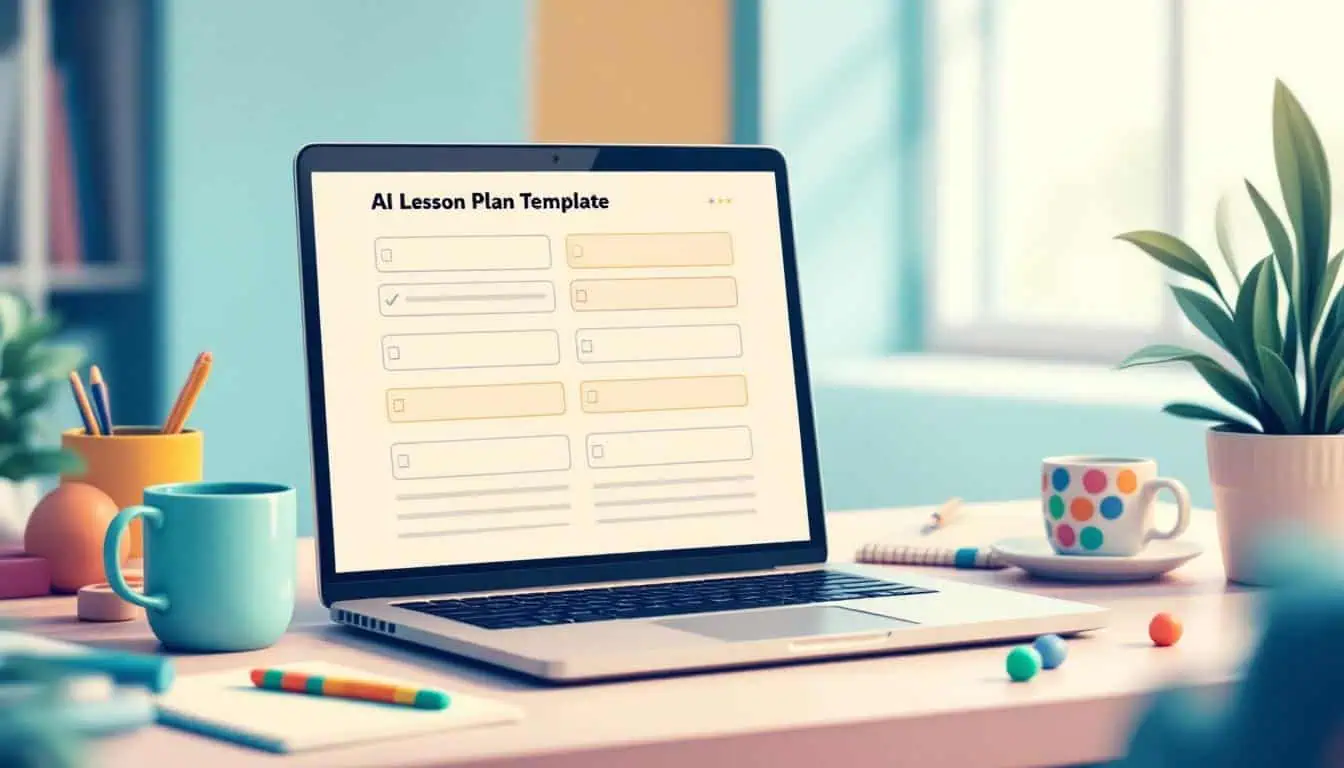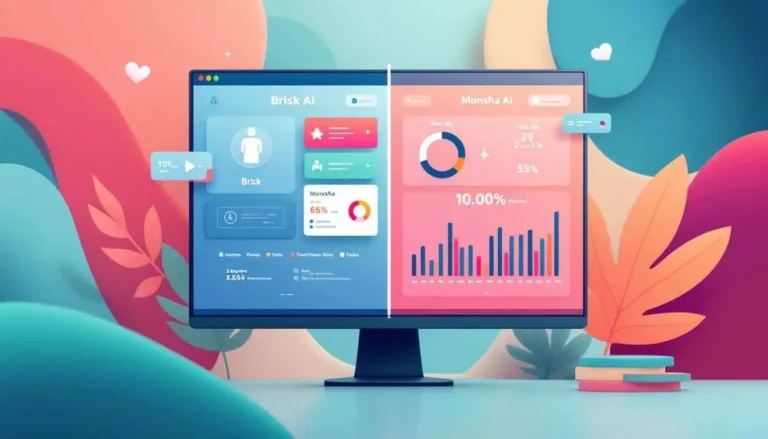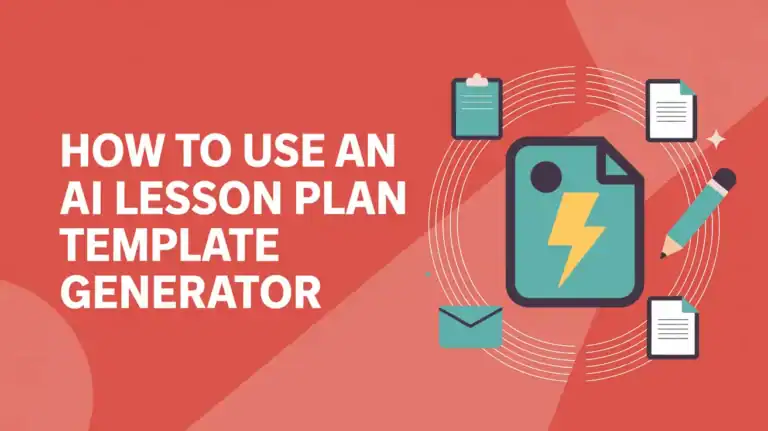5 Smart AI Prompts for Standards-Aligned Lesson Plans
Staring at a blank page when you need a lesson plan?
You're not alone, especially if your ADHD brain jumps from one idea to another or just freezes up completely.
Wanting to constantly reinvent the wheel is all too familiar for many of us teachers with ADHD or autism.
But there's a quicker, less stressful way: let AI do the heavy lifting.
I used to spend Sunday evenings staring at my planner, knowing I had lessons to write.
But feeling completely stuck on where to even begin. Sound familiar?
I get how heavy the relentless planning feels, and I want to share some tips with you to make it easier.
TL;DR
TL;DR
If lesson planning feels like trying to solve a puzzle with missing pieces, these 5 AI prompts will give you structure, save your brainpower, and help you create standards-aligned lessons without the overwhelm. Open for quick summary of 5 prompts.
- Turn a standard into an objective
→ “Turn this standard into a student-friendly learning objective for a mixed-ability classroom: [paste standard].” - Build a lesson skeleton
→ “Create a 3-step lesson outline for this objective: [paste objective]. Include an intro, activity, and exit ticket.” - Add variety with multiple modalities
→ “List 3 ways to teach this skill: one visual, one hands-on, and one auditory. Make them easy to prep.” - Customize for student needs
→ “Suggest 2 adaptations for this lesson that support sensory or executive functioning challenges.” - Connect it to real life
→ “Give me a one-sentence real-world connection for this skill that students will actually care about.”
Why Teachers Often Struggle with Lesson Planning
Many teachers describe starting lesson plans as facing a blank page.
And that's extra tough if your mind is already juggling deadlines and details.
The pressure to make every lesson fresh, relevant, and standards-aligned can feel paralyzing.
I remember sitting at my kitchen table with my coffee getting cold.
Trying to come up with something fresh and engaging for my students.
While my brain felt like it was wading through molasses.
That's where AI can come in, handing you a new draft so you never have to start from zero.
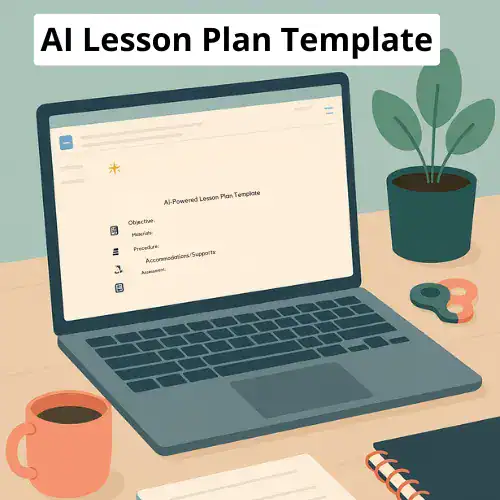
Save Hours with This Free Lesson Plan Template
Designed especially for teachers with ADHD or autism who need structure without the added stress.
✔ Built-in prompts
✔ Editable
✔Teacher self-accommodations ideas
✔ Sample plan included
5 AI Prompts for Standards-Aligned Lesson Plans
Each one is designed to help you get a clear, usable starting point.
You still need to make sure it works for you and your students.
But this way you save some real brain power along the way.
1. Turn a Standard into a Lesson Objective
Prompt:
Act like a curriculum coach.
Turn this standard into a student-friendly learning objective for a mixed-ability classroom: “[paste standard here]”.
Why it works: Standards are often abstract. This prompt translates them into something more practical.
2. Build a Lesson Skeleton
Prompt:
Create a 3-step lesson outline for this objective: “[your rewritten objective]”.
Include an intro, a practice activity, and an exit ticket.
Why it works: This gives you a structure to plug into your template.
3. Add Variety with Multiple Modalities
Prompt:
List 3 ways to teach this skill: one visual, one hands-on, and one auditory. Keep them realistic and low prep.
Why it works: Keeps your lesson accessible for days when your energy is wavering.
4. Customize for Your Students
Prompt:
Suggest 2 adaptations for this lesson that support people with sensory sensitivities or executive functioning challenges.
Why it works: You get support for inclusion without having to get too specific at first.
5. Anchor It in Real Life
Prompt:
Give me a one-sentence real-world connection for this skill that a [age of your student] might be interested in.
Why it works: Cuts through the “why do I have to learn this?” question before it even starts.
The Basics of Writing AI Prompts for Lesson Plans
A prompt is just a request where you tell AI what you need.
For lesson planning, start with the basics:
- Grade level
- Age of students (optional)
- Subject
- Lesson topic
- Standards
- Activity type
- Assessment
Try this example prompt:
Create a fourth grade science plan on ecosystems aligned to NGSS with hands-on activities and an exit ticket.
That one line can generate a full lesson idea in moments.
Of course you are still the expert and you still get to decide what to include, or not.
Understanding Grade, Subject, and Standards in Prompts
Always include the grade and subject like “fourth grade science” so your AI knows your classroom's level.
Naming the standard, like NGSS for science, ensures your lessons tie directly to curriculum goals.
The more you specify, the better your AI plan will suit your actual teaching needs.
I learned this after getting a few lesson plans that were way too advanced for my students.
Specificity is your friend here.

Specifying Activities and Assessments in Your AI Prompt
Want engaging lessons, not worksheets?
Ask for it.
Your prompt can include phrases like “hands-on activities” or “group work.”
Ask for assessments too, such as “exit tickets” or “quizzes.”
This technique nudges the AI to create lessons packed with variety and real learning opportunities.
Because let's face it, nobody wants to be the teacher handing out yet another worksheet.
Using Modifiers to Personalize Lesson Plans
It's easy to make AI-generated plans even more student-friendly.
Add modifiers to the prompt, like:
- adapt for English language learners
- differentiate by reading level
- include kinesthetic and auditory activities
- add choices for neurodivergent learners
- support executive function with clear structure
These give you plans that address a range of needs, making your lessons work for both you and your students.
(Anyone who thinks and learns in different ways.)
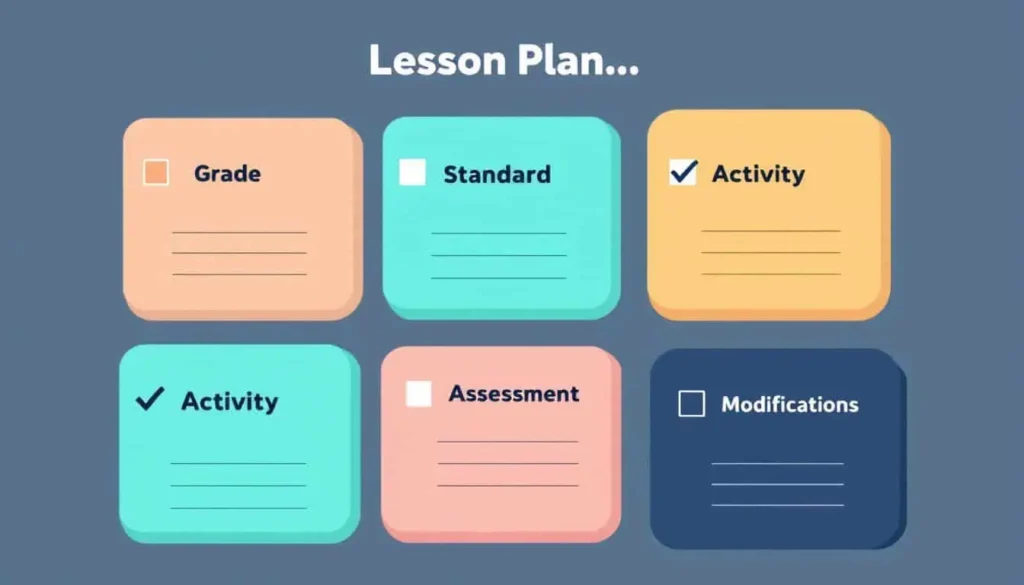
Why Include Multiple Learning Styles?
Kinesthetic learning uses movement.
Auditory refers to listening-based.
Visuals speak to you and your nd students who may be “visual learners.”
By asking the AI to include different approaches, you reach more brains in your room.
As a former music teacher, I know how much movement and sound impacts students and myself.
Why not build that right into your prompts?
Example Full AI Prompt and Its Breakdown
Need a prompt that covers it all?
Here's a comprehensive one:
Create a fourth grade science lesson plan on ecosystems aligned to NGSS,
with hands-on activities, an exit ticket, adapted for English language learners,
and differentiated by reading level including kinesthetic and auditory activities.
Breaking it down:
- Grade and subject: Fourth grade science
- Standard: NGSS
- Activities: Hands-on
- Assessment: Exit ticket
- Modifications: For English language learners, reading levels, and multiple learning styles
Each part gives the AI the info it needs to make a lesson that fits your classroom's range of needs.

How to Use the AI-Generated Lesson Plans
Treat the plan the AI gives you like a starter recipe.
Copy and paste it into your own template.
Then adjust and adapt so it fits your class's unique quirks, strengths, or schedules.
AI makes the first draft easy, but your teacher wisdom makes it make sense.
I always read through the AI suggestions and think, “Would this have really worked with my kids?”
Sometimes the answer is yes, sometimes it needs tweaking.
Step-by-Step Guide: From Prompt to Lesson Plan
Follow these steps for a streamlined process:
- Write your detailed AI prompt
- Enter it into your AI tool
- Review the draft lesson plan
- Copy it into your favorite template
- Personalize and adjust for your class's needs
You control the details, but you start with everything in place.
Tips for Writing Effective AI Prompts
Be clear about grade, subject, and standards.
Mention the desired activity and assessment types.
Add modifiers for personalized support.
Keep your language simple and direct.
Clear prompts get you lesson plans that require less editing on your part.

Common Pitfalls to Avoid When Using AI for Lesson Plans
Don't settle for vague prompts.
You'll get bland, one-size-fits-all ideas.
Always review your drafts. Always!
Speak it outloud, practice it if you have time. Does it really make sense to you?
Double-check that your AI-created plan matches standards and your classroom's actual needs.
We all know how unhelpful certain canned curriculum can be; so definitely try to avoid that when you make these.
Give Yourself Permission to Experiment
Don't be afraid to try different prompts, creative activities, or new modifiers.
Play around with it.
Sometimes the unexpected delivers the best ideas.
AI is your teaching sidekick, not a replacement.
Let it spark your creativity instead of doing all the thinking for you.
Why This Matters for Neurodivergent Teachers
AI prompts can seriously reduce your planning time, ease the mental load, and help you build what you want.
(Check out this one to learn how to make a digital planner!)
Using AI-lesson plan template generators can help even more.
When your lesson plans are faster to make, standards-aligned, and ready to adapt for real kids?
You win back some of your energy. And your class benefits from that!
For those of us who struggle with executive function or decision fatigue?
Having a solid starting point can be the difference between getting lessons done on time.
Give it a try. Your future self (and your students) will thank you.
Join the Community
Want to connect with other like-minded educators?
We share ideas, ask for help, vent, and generally support each other.
Visit our Facebook group and take it one step at a time.
You've got this! ❤️
Found Something Helpful? I'd Be So Grateful If You'd Please Pin One of These Images!
It truly helps my blog reach more teachers like you. Thank you!




